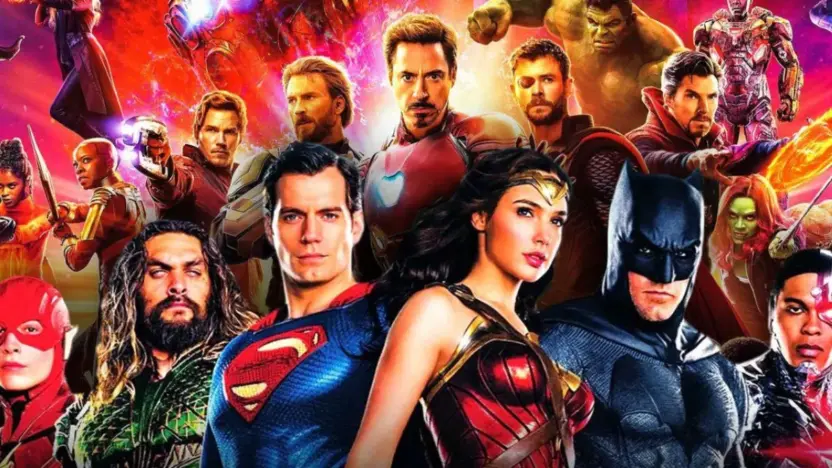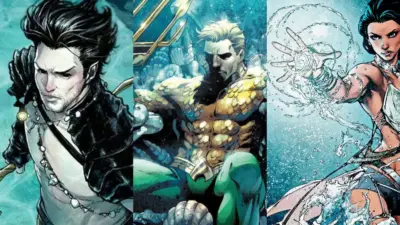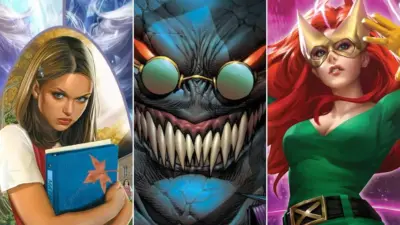The long-standing debate between DC and Marvel enthusiasts has echoed through comic shops, conventions, and movie theaters for decades. These two titans of the comic book industry, each with its rich history and universe of characters, have built passionate fan bases and left indelible marks on popular culture. While both have their strengths and weaknesses, there are distinct arenas in which DC undeniably has the upper hand. From its mythological underpinnings to its multifaceted heroes, DC brings to the table a set of unique qualities that, for many, set it apart from its rival, Marvel. In this article, we will learn about Aspects Where DC Outshines Marvel, and celebrate the nuances and attributes that make it a powerhouse in its own right.
Aspects Where DC Outshines Marvel
Iconic Characters
Indeed, iconic characters are a significant aspect where some fans and critics feel that DC have an edge, not just in terms of villains but also in superheroes. Here’s a closer look at why:
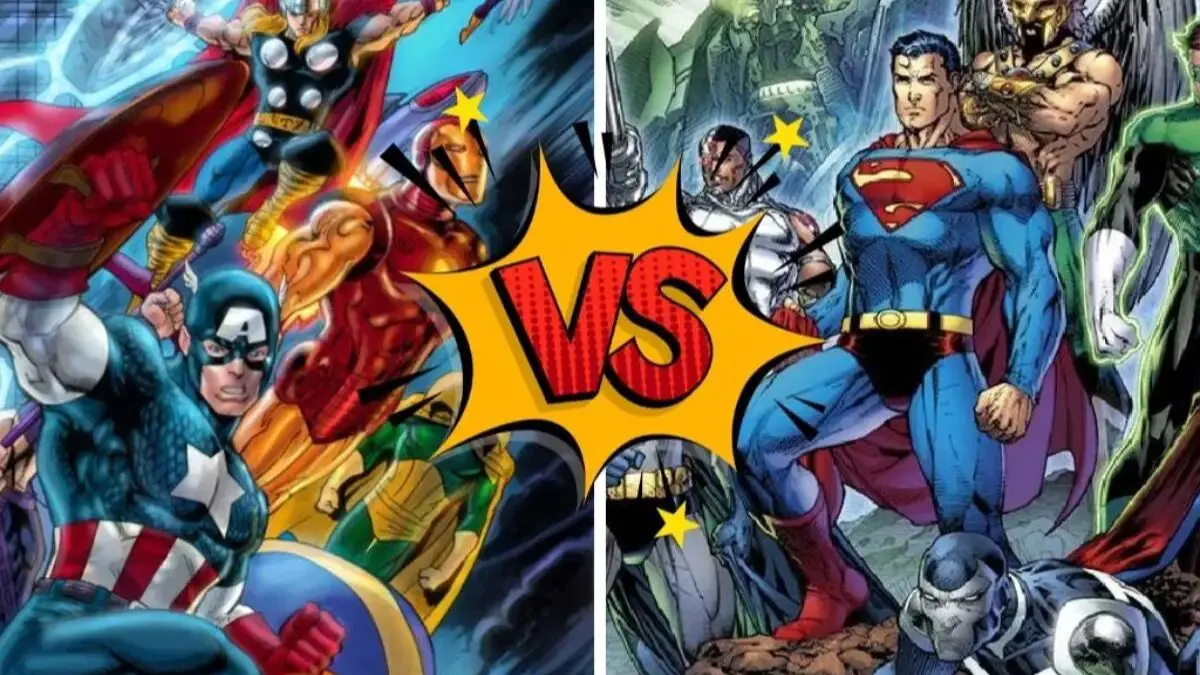
Superheroes:
- Superman: Known as “The Man of Steel,” Superman is arguably the most recognizable and iconic superhero in the world, symbolizing hope, justice, and moral integrity. He set the standard for superheroes, and his emblem is universally recognized.
- Batman: The Dark Knight is another universally recognized character, symbolizing justice and the eternal struggle against inner darkness. Batman’s story has been told in countless ways, exploring the depth of his character and his enduring quest against crime.
- Wonder Woman: She is a symbol of empowerment, equality, and justice. Wonder Woman’s impact is vast, spanning various media, and she is one of the most iconic female superheroes.
Villains:
- The Joker: Batman’s arch-nemesis is one of the most iconic villains, with a chaotic and unpredictable nature that has captivated audiences. The Joker represents the anarchic counterbalance to Batman’s order, and his complex psychology has been explored in various acclaimed stories and films.
- Lex Luthor: Superman’s arch-enemy is one of the most recognizable villains in comic books. His extreme intellect, combined with his immense resources and his ideological opposition to Superman, make him a compelling antagonist.
- Catwoman: This character blurs the line between hero and villain, making her one of the most complex and enduring characters in the DC Universe. Her complicated relationship with Batman and her moral ambiguity have been explored in numerous stories.
Legacy and Impact:
The iconic nature of these characters isn’t just about recognition; it’s also about their enduring impact on culture, media, and the comic book genre. These characters have been interpreted, deconstructed, and reimagined in countless ways over the decades, representing different ideals, moral struggles, and philosophical questions. This enduring legacy and the diverse array of stories told using these iconic characters are often cited as aspects where DC outshines Marvel.
Complex and Dark Storylines
Another argument that’s often made in favor of DC Comics over Marvel is that DC tends to feature more complex and dark storylines. This approach results in narratives that often deal with philosophical, ethical, and existential questions, exploring the human condition and the nature of heroism, power, and morality in nuanced and thought-provoking ways. Here are a few examples and reasons why some fans may find DC’s storylines to be more complex and darker:
Mature Themes:
DC often tackles mature and profound themes, exploring human psychology, the concept of justice, the consequences of power, and the moral compromises individuals make. Storylines like “Watchmen” and “The Killing Joke” are prime examples, where traditional superhero tropes are deconstructed to explore deeper philosophical and ethical questions.
Psychological Depth:
Characters like Batman are renowned for the psychological depth and the exploration of the human psyche. Batman’s rogues’ gallery, especially characters like Two-Face and The Riddler, embody various aspects of human psychology and morality, and Batman himself is a study in trauma, obsession, and the struggle for justice in an unjust world.
Philosophical and Ethical Dilemmas:
DC storylines often feature characters grappling with significant philosophical and ethical dilemmas. Superman, for instance, represents the ultimate immigrant and wrestles with his role as a savior and his responsibilities towards humanity. The question of whether absolute power corrupts absolutely is a recurring theme in his narratives.
Dystopian Narratives:
Several DC storylines present dystopian futures or alternate realities where characters must confront the consequences of their actions or the actions of others. “Kingdom Come” explores a future where the traditional heroes are out of touch with the world’s needs, leading to a catastrophic conflict, and “Injustice: Gods Among Us” explores a world where Superman becomes a dictator.
Tragedy and Loss:
Loss, tragedy, and the ensuing struggle for redemption are recurrent themes in DC Comics. The origins of characters like Batman and The Flash are rooted in personal tragedy, and the impact of loss and the pursuit of redemption are crucial elements in their narratives.
Notable Storylines:
- “Watchmen” by Alan Moore and Dave Gibbons: A deconstruction of the superhero genre, exploring the implications of power, morality, and the human condition.
- “The Dark Knight Returns” by Frank Miller: An older Batman comes out of retirement in a dystopian future, questioning the role and relevance of superheroes in society.
- “Identity Crisis” by Brad Meltzer and Rags Morales: A storyline dealing with mature themes, exploring the personal lives and moral compromises of the heroes.
Multiverse Concept
The concept of the “Multiverse” has been integral to the DNA of DC Comics for decades. While both Marvel and DC have delved into the idea of multiple realities and alternate universes, DC is often credited with pioneering and more deeply exploring the Multiverse concept. Here’s a closer look at DC’s engagement with the Multiverse:
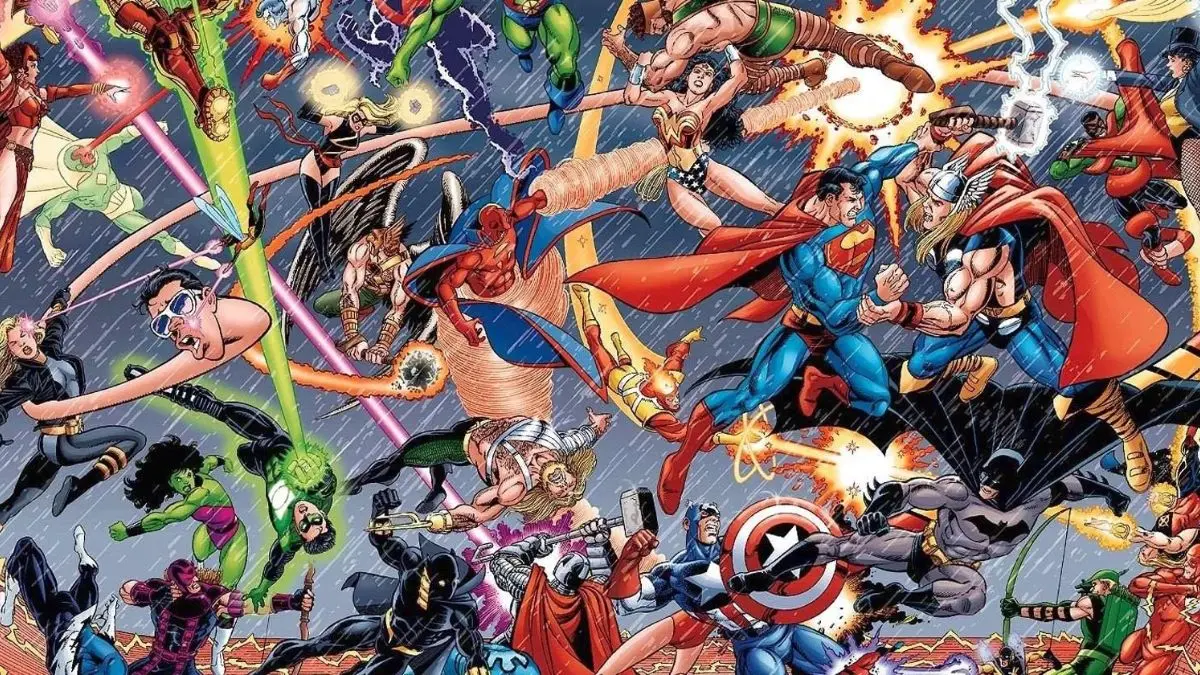
Historical Introduction:
DC introduced the idea of the Multiverse in the Silver Age of comics as a way to explain inconsistencies in stories and the existence of Golden Age versions of characters like the Flash (Jay Garrick) and the newer Silver Age Flash (Barry Allen). The landmark story was “Flash of Two Worlds” in “The Flash” #123 (1961), where Barry Allen meets Jay Garrick, establishing that the Golden Age heroes existed on a parallel Earth called Earth-2.
Crisis Events:
One of DC’s most renowned storylines, “Crisis on Infinite Earths” (1985-1986), was centered around the Multiverse. Written by Marv Wolfman and illustrated by George Pérez, this event aimed to simplify the DC Universe by merging multiple Earths and streamlining continuity. Subsequent “Crisis” events, such as “Infinite Crisis” and “Final Crisis,” further delved into the Multiverse concept.
Comparative Perspective:
Marvel has its multiverse concept, notably highlighted in storylines like “What if…” and in movies like “Spider-Man: Into the Spider-Verse.” However, DC’s consistent engagement and deeper exploration of the Multiverse across its publishing history have made it a hallmark of the brand. For many fans, the Multiverse is one of the distinguishing features that sets DC apart.
Animated Series and Features
DC Comics also has a strong reputation for producing high-quality animated series and features, and many comic book readers believe that DC’s animated projects are superior to Marvel’s in terms of quality, depth, and faithfulness to the source material.
Quality Animation Series:
- “Batman: The Animated Series” (1992–1995): Often considered one of the greatest animated series of all time, this series is renowned for its mature storytelling, character development, and distinctive, stylized animation. It has influenced numerous subsequent series and is beloved by fans of all ages.
- “Justice League” (2001–2004) and “Justice League Unlimited” (2004–2006): These series are celebrated for their ensemble cast, diverse array of characters, complex storylines, and epic scale, bringing together various heroes from the DC Universe.
Acclaimed Animated Features:
- “Batman: Mask of the Phantasm” (1993): This animated film, an extension of “Batman: The Animated Series,” is highly regarded for its deep and emotional storyline, intricate character study, and stunning animation. It received widespread acclaim and is considered a classic.
- “Justice League: The Flashpoint Paradox” (2013): This feature is noted for its dark and mature themes, exploring an alternate reality and the consequences of altering time. It’s one of the most popular and well-received DC animated movies.
Diverse Storytelling:
DC animated series and features often explore a wide range of themes and tones, from the more light-hearted and comedic, like “Teen Titans Go!,” to the darker and more serious, like “Batman: Under the Red Hood.” This diversity allows DC to reach a broad audience and explore various aspects of their characters and world.
Comparative Perspective:
While Marvel has also produced various animated series and has had success with shows like “X-Men: The Animated Series” and “Spider-Man: The Animated Series” in the ’90s, many fans and critics argue that DC has maintained a consistent level of quality and innovation in animation, making it a defining feature of the brand.
Iconography and Symbolism
Iconography and symbolism play an important role in establishing the essence of comic book characters and imbuing them with meaning and depth. Many fans and critics argue that DC Comics excels in creating iconic symbols and incorporating meaningful symbolism in its characters and narratives.
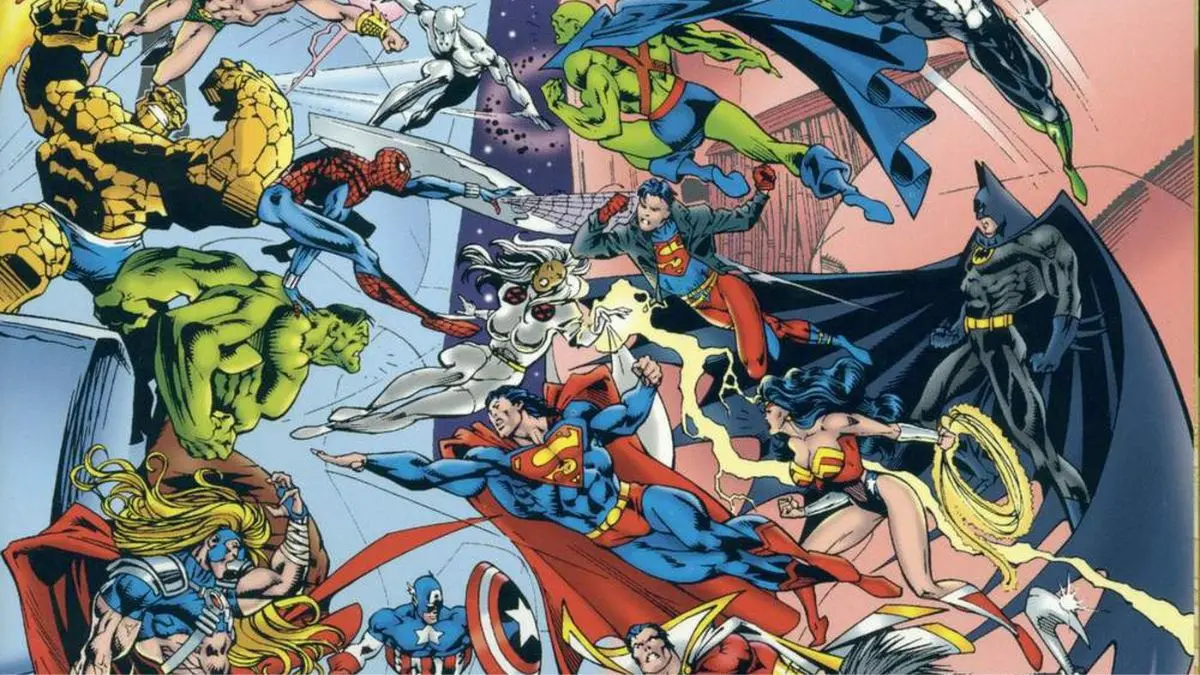
Iconic Symbols:
- Superman’s “S” Shield: Perhaps the most iconic symbol in all of comics, it represents hope, justice, and the enduring spirit of humanity. It has become a universal symbol recognized around the world.
- Batman’s Bat-Symbol: The bat silhouette is synonymous with vigilance, justice, and the battle against the darkness, both within and without.
- Wonder Woman’s Eagle and “WW” Emblem: These symbols represent freedom, equality, empowerment, and peace, embodying Wonder Woman’s mission and ideals.
Representation and Ideals:
- Superman as the Immigrant: Superman, an alien from Krypton, represents the ultimate immigrant story, symbolizing hope and the pursuit of a better life, reflecting American ideals.
- Batman as the Human Spirit: Batman, a human with no superpowers, represents the indomitable human spirit, the relentless pursuit of justice, and the constant battle against one’s inner demons.
- Wonder Woman as the Ambassador: Wonder Woman symbolizes the pursuit of peace and equality, representing an ambassador between worlds and a bridge between the divine and the mortal.
Comparative Perspective:
While Marvel also utilizes symbolism and has created iconic characters with Spider-Man, Captain America, and Iron Man, DC’s utilization of archetypal and mythological symbolism, combined with the universal recognition and impact of its characters’ symbols, is often cited as a distinguishing factor in the comparison between the two companies.
Also Read: Top 10 Superheroes With Water-Based Abilities
